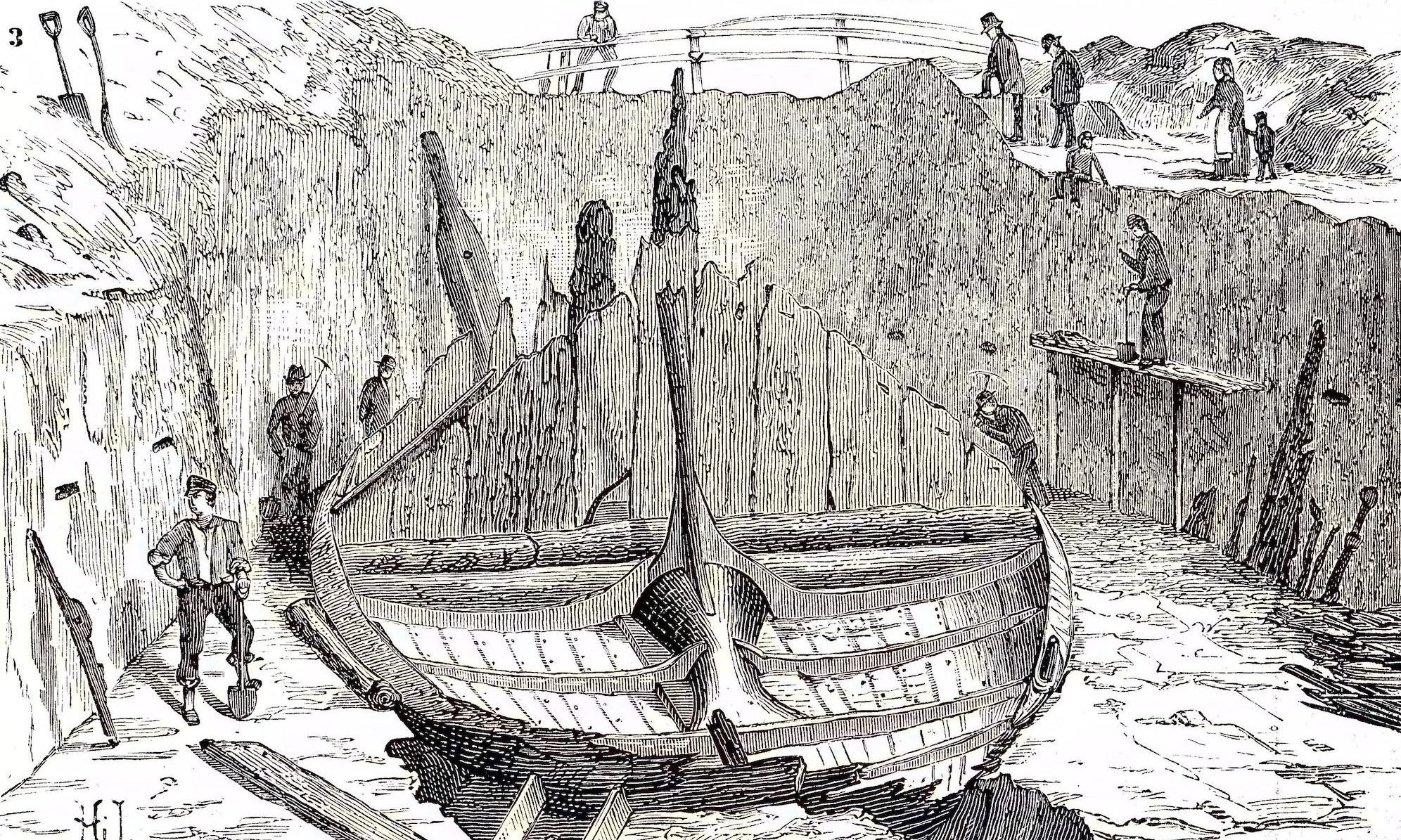
Scandinavia’s oldest ship burial has been found in Leka, in the northern part of Norway’s Trøndelag County. A small survey was undertaken at the Herlaugshaugen burial mound in the summer by a metal detectorist and archaeologists on behalf of the Norwegian Directorate for Culture Heritage. The team were trying to confirm whether or not the burial mound contained a ship, which was corroborated when nails and rivets were found on the site. The burial—dating back more than 1,300 years—is now believed to be Norway’s oldest.
The traditional custom of burying the deceased person inside their ship and by covering the vessel with a mound was believed to make the person’s transition to the afterlife a safe one.
The Herlaugshaugen burial measures over 60 meters (197 feet) in diameter. It had previously been excavated on three occasions during the 18th century but all finds, including a bronze cauldron, went missing from the site during the 1920s. The bronze cauldron was supposedly melted down for shoe buckles.
The excavation team found that the mound had been constructed around 700 C.E., during the Merovingian period (ca. 550 to 880 C.E.) which immediately predated the Viking Age. Other key Morovingian Period era burials include the Anglo-Saxon cemeteries at Sutton Hoo in England, discovered in 1938.
The discovery is significant for archaeologists in the region, according to project manager of the dig and NTNU University Museum archaeologist Geir Grønnesby as it “pushes the whole tradition of ship burials quite far back in time” and “tells us that people from this area were skilled seafarers—they could build big ships—much earlier than we previously thought.”
The discovery has lead experts to question why such a large ship was built. One answer could be an earlier start to significant Scandinavian maritime expeditions than previously believed. Grønnesby said that “the burial mound itself is also a symbol of power and wealth. A wealth that has not come from farming in Ytre Namdalen. I think people in this area have been engaged in trading goods, perhaps over great distances.”
Several other burial mounds—10 percent of all large burial mounds in Norway—have been found near to Herlaugshaugen in the Namdalen Valley. The majority of these have not yet been excavated.
More Trending Stories:
Art Dealers Christina and Emmanuel Di Donna on Their Special Holiday Rituals
Stefanie Heinze Paints Richly Ambiguous Worlds. Collectors Are Obsessed
Inspector Schachter Uncovers Allegations Regarding the Latest Art World Scandal—And It’s a Doozy
Archaeologists Call Foul on the Purported Discovery of a 27,000-Year-Old Pyramid
The Sprawling Legal Dispute Between Yves Bouvier and Dmitry Rybolovlev Is Finally Over